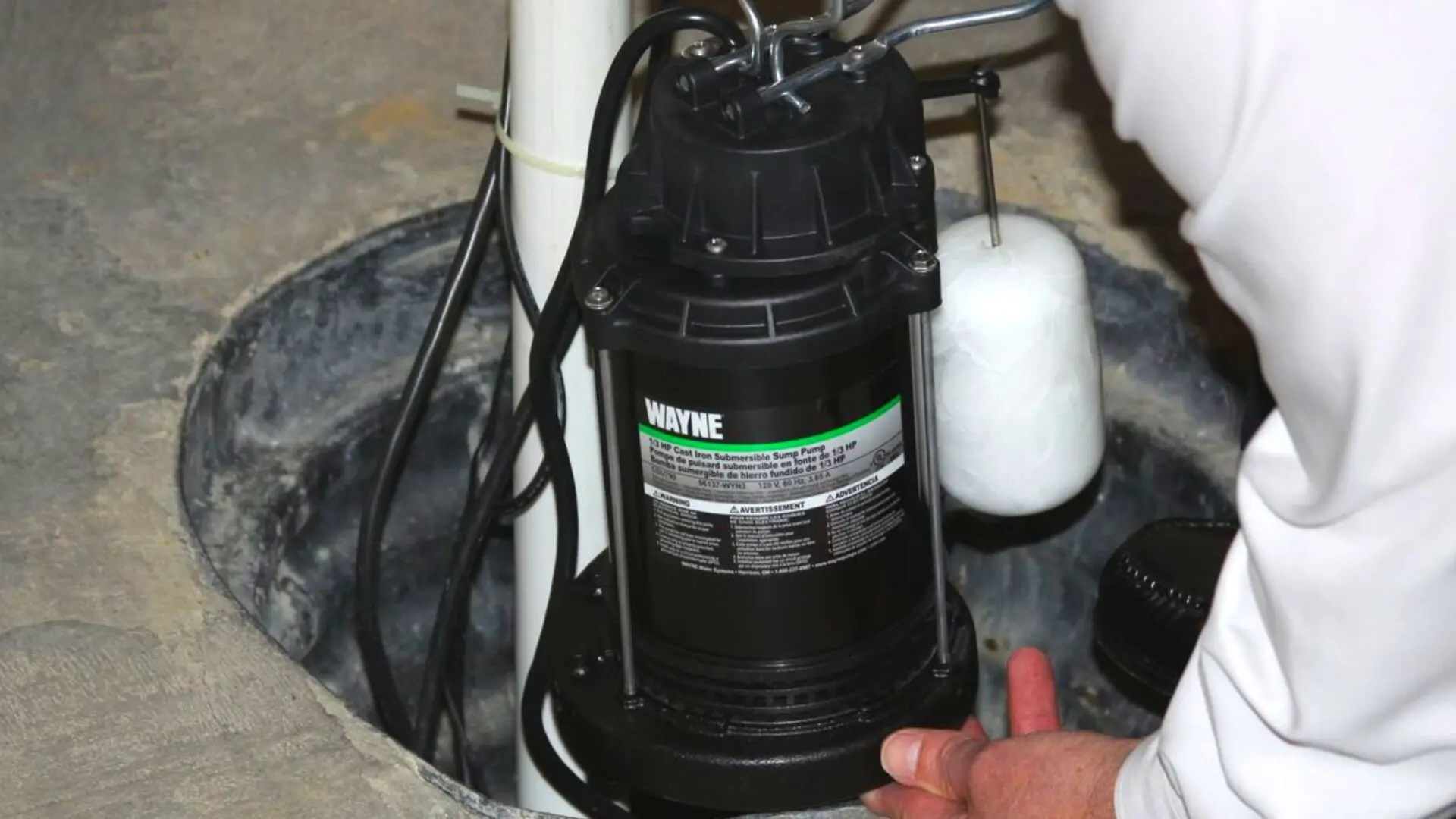Confirmed Methods for Maintaining a Sump Pump
Confirmed Methods for Maintaining a Sump Pump
Blog Article
This great article down the page involving How To Effectively Clean A Sump Pump is without a doubt insightful. Read it yourself and figure out what you think of it.

Sump pumps are critical parts in many homes, specifically in areas susceptible to flooding or too much dampness. They help prevent water damages by efficiently getting rid of excess water from cellars or crawl spaces. Nevertheless, like any other home appliance, sump pumps call for regular maintenance to guarantee they function properly when needed the most. Cleansing your sump pump is an essential part of its maintenance, and understanding how to do it appropriately can conserve you from expensive fixings and prospective calamities.
Intro
Keeping a clean sump pump is crucial for its correct functioning and longevity. Ignoring this vital task can bring about blockages, malfunctions, and ultimately, water damages to your residential or commercial property. Consequently, finding out just how to clean a sump pump is essential for house owners who rely upon these tools to keep their cellars dry and protected.
Understanding the Sump Pump
Prior to diving into the cleaning procedure, it's necessary to have a standard understanding of just how a sump pump functions. Usually set up in a pit or container below the basement flooring, a sump pump consists of a number of essential components, consisting of a pump, a float button, and a discharge pipe. When water builds up in the pit, the float button activates the pump, which after that pumps the water out with the discharge pipeline, far from the building's structure.
Signs of a Dirty Sump Pump
Recognizing when your sump pump requires cleaning is crucial for stopping possible breakdowns. Some typical indicators that show a filthy sump pump include unusual sounds throughout procedure, reduced water flow, and visible particles in the pit. If you see any one of these symptoms, it's important to cleanse your sump pump immediately to stay clear of any type of additional issues.
Planning for Cleansing
Before you start cleaning your sump pump, it's essential to take some safety and security preventative measures. Start by shutting off the power to the pump to prevent any electrical mishaps. Additionally, wear suitable safety equipment, such as gloves and safety glasses, to secure on your own from dust, particles, and possible microorganisms.
Step-by-step Overview to Cleansing a Sump Pump
Turning off the Power
Begin by detaching the power supply to the sump pump to prevent any type of crashes while cleansing.
Removing Debris and Dust
Utilize a pail or a scoop to remove any kind of visible particles, dirt, or sediment from the sump pit. Dispose of the debris effectively to stop it from blocking the pump or the discharge pipeline.
Cleansing the Pump and Drift Switch Over
When the pit is clear of particles, carefully remove the pump from the pit. Examine the pump and the float button for any kind of indications of damages or wear. Make use of a soft brush or towel to clean up the surface areas and eliminate any type of built up grime.
Flushing the System
After cleansing the pump and float switch, purge the sump pit with tidy water to remove any type of remaining dust or sediment. This will certainly aid ensure that the pump operates smoothly and successfully.
Looking For Appropriate Performance
Prior to reinstalling the pump, do a quick examination to make sure that the float button triggers the pump correctly. Put some water into the sump pit and observe the pump's procedure. If everything is operating properly, you can reassemble the pump and reconnect the power supply.
Upkeep Tips to Keep Your Sump Pump Clean
Along with routine cleansing, there are numerous maintenance tips you can follow to maintain your sump pump in optimum condition:
Final thought
Cleansing your sump pump is an essential aspect of its maintenance and ensures that it operates properly when you require it one of the most. By adhering to the actions outlined in this overview and incorporating routine maintenance right into your routine, you can extend the lifespan of your sump pump and shield your home from water damage.
6 STEPS ON HOW TO CLEAN A SUMP PUMP PROPERLY
UNDERSTANDING SUMP PUMPS
Your sump pump plays a crucial role in protecting your home by managing and removing excess water. It primarily functions as a “shield”, guarding your basement against the damaging effects of water accumulation. The pump is housed in a sump pit in the lowest part of your basement, and its job is to pump out any water that collects there.
During heavy rainfalls or when snow melts rapidly, water can infiltrate your basement, posing potential risks like flooding, structural damage, and harmful mold growth. Here, the sump pump springs into action, pumping out the intruding water and directing it away from your home.
SAFETY FIRST
Before cleaning, remember to prioritize safety. Disconnect the sump pump from the power source to prevent any accidental electric shocks. Also, wear sturdy gloves to protect your hands from any sharp or dirty components within the pump.
REMOVE THE SUMP PUMP
After ensuring your safety, the next step is to remove the sump pump from its pit. Doing this might require careful maneuvering as you don’t want to damage any pump components. Once removed, clean the sump pit to remove any accumulated debris or sludge.
INSPECT THE PUMP
Inspect the pump for any visible signs of wear or damage. Check the power cord, float switch, and impeller housing. If any components look worn out or damaged, consider replacing them to ensure optimal performance.
CLEAN THE PUMP
Thoroughly clean the pump with warm, soapy water. Make sure to rid it of any dirt, gravel, or other debris that might impede its performance. You can use a toothbrush to clean the small, hard-to-reach parts of the pump.
REINSTALL THE SUMP PUMP
Reinstall the pump into the sump pit Make sure it’s positioned correctly to remove the water effectively Once it’s back in place, reconnect it to the power source TEST THE PUMP
Finally, pour some water into the pit to ensure the pump works correctly. It should start automatically and begin pumping out the water; if it doesn’t, check the power source and the positioning of the pump.
Remember, while cleaning your sump pump is an essential part of home maintenance, hiring a professional plumber for a thorough inspection and cleaning at least once a year is also important. This will ensure that your pump is in optimal condition, ready to protect your home from potential water damage.
BEST PRACTICES FOR CLEANING SUMP PUMP DISCHARGE PIPES
Regular Inspection: Regularly inspect your discharge pipes, especially during heavy rainfall or snowmelt periods. Look for any signs of blockage or damage. Early detection of problems can prevent serious issues down the line. Periodic Cleaning: Over time, sediment and debris can accumulate in the discharge pipes, impeding the flow of water. Regular cleaning helps keep the pipes clear and functioning efficiently. You can use a high-pressure water jet to effectively clean the pipes. Insulation During Winter: In colder climates, discharge pipes can freeze, blocking the outflow of water. Protect your discharge pipes from freezing temperatures by insulating them with foam pipe insulation. This will ensure the sump pump can continue to discharge water even in freezing conditions. Proper Positioning: The discharge pipe should be positioned to direct water away from your home’s foundation. Improper positioning can lead to water seeping back into the basement. Ensure the pipe is long enough and angled correctly. Installation of a Check Valve: A check valve prevents water from flowing back into your sump pit after the pump has pushed it out. Installing a check valve helps maintain the efficiency of your sump pump and reduces the risk of flooding. Minimize Pipe Turns: Every curve or turn in the discharge pipe can decrease the efficiency of water flow. By minimizing turns and bends in your discharge pipe, you can increase the efficiency of your sump pump. https://www.fullspeedplumbing.com/how-to-clean-a-sump-pump-properly9999/

As an enthusiastic person who reads about , I assumed sharing that piece of content was essential. Please pause to promote this blog post if you liked it. We cherish your readership.
Get A Quote Report this page